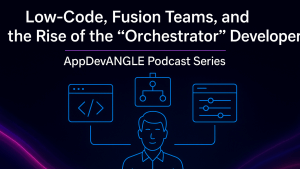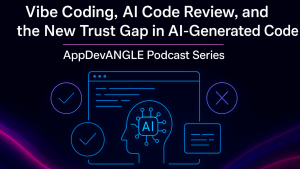NOTE: This brief is part of theCUBE Research coverage of the AI Agent Builder Summit.
At the AI Agent Builder Summit, hosted by theCUBE Research on April 16 and again on June 25, AgilePoint outlined a comprehensive approach to operationalizing, democratizing, and governing open agentic workflows, which we believe provides them a strategic, long-term advantage in the emerging enterprise Agentic AI marketplace. Co-founder and CEO Jesse Shiah’s bold vision for a purpose-built, cross-functional, and resilient business process automation platform has been in the works for over a decade, providing an enterprise-tested solution. In this brief, we’ll explore in more depth what AgilePoint has to offer for enterprises looking to deploy agentic workflows.
AgilePoint is a pioneer in digital process automation (DPA), with deep roots in low-code and no-code innovation. Long before “agentic AI” became a buzzword, the company concentrated on solving the complex coordination of enterprise systems, data, and people. AgilePoint’s platform provides a drag-and-drop visual environment for modeling workflows that integrate across hundreds of SaaS, legacy, and custom applications, empowering customers to develop scalable business processes without starting from scratch.
What makes AgilePoint stand out in today’s AI landscape is its foresight: it spent years building infrastructure for abstracting business logic and system interactions, now layered with GenAI and agent-based logic to transform into a true agentic orchestration engine. As Jessie pointed out:
“That’s why when we founded AgilePoint…we realized you must apply [semantic] abstraction all the way into the business domain…we call it holistic abstraction, which also enables any agent, from anywhere, to be used.”
This brief highlights three core differentiators that we learned from AgilePoint’s participation in the AI Agent Builder Summit, each of which supports our collective conclusion here at theCUBE Research that AgilePoint is a category innovator in Agentic workflow technologies.
Watch the AnalystANGLE
Holistic Abstraction for Semantic Workflows
At the core of AgilePoint’s value proposition is what we call a “semantic control layer,” a comprehensive abstraction capability that allows agentic workflows to be defined by meaning and intent rather than by technical syntax or system-specific code. This layer isn’t merely a user-friendly interface; it enables AI agents to reason across workflows with contextual awareness.
Jesse Shiah emphasized this shift during our interview with him at the AI Agent Builder Summit:
“That means that the application itself, your automation, your orchestration has to be built in a way to enable agents to change them, change the logic, but without involving code changes… That’s what we mean by holistic abstraction.”
AgilePoint’s foundational differentiator is its architectural commitment to “holistic abstraction”—a design principle that allows both agents and business users to operate workflows and adapt business logic without requiring code changes.
Jesse Shiah explained that this vision was seeded over 20 years ago during his early research in real-time systems that needed to respond dynamically to unpredictable events. That architecture—long before AI agents were mainstream—was built for adaptability and trusted execution across systems and logic layers.
“If we want to enable agents to adapt your business logic… your automation, your orchestration has to be built in a way to enable agents to change them—change the logic—but without involving code changes. That’s what we mean by holistic abstraction.”
AgilePoint goes well beyond just using GenAI to automate tasks. It allows AI agents to operate within semantically structured, composable workflows that are both easy to understand and adaptable during runtime. This is essential for ensuring AI behavior aligns with business goals. Shiah made a direct connection between LLM outputs and real-world business execution.
“From LLM being a lot of content, a lot of words, you want to turn that into actions. And then also carry out the action with trust. That’s really key.”
AgilePoint’s architecture includes:
- Over 1,200 reusable building blocks and 15 process patterns to create model-driven applications.
- Metadata-driven abstraction of over 120 enterprise systems into harmonized, no-code components.
- A visual designer for drag-and-drop logic building that requires no specialized development skills.
This architectural approach enables not only intelligent execution but also real-time orchestration, self-optimization, and human-in-the-loop governance. The result is a system where agents don’t just automate repetitive tasks learned from the past, but also leverage real-time data and decision-making to more effectively drive business outcomes.
By simplifying the complexity of applications, data schemas, and API calls into higher-order models, AgilePoint enables workflows to be designed in business language instead of technical jargon. This is transformative because it:
- Enables dynamic composability of agents, services, and data.
- Supports domain-specific understanding aligned with enterprise logic.
- Facilitates natural‑language orchestration rooted in business semantics.
AgilePoint creates a semantic layer of agentic workflows by abstracting business logic, data, and system interactions into metadata-driven models that represent intent rather than technical syntax. This allows AI agents to understand, adapt, and orchestrate workflows using business language, enabling dynamic execution and reasoning across systems without code changes. The result is a composable, agent-ready environment where logic and behavior are defined semantically and governed centrally.
This is critical to building intelligent, semantics-aware workflows that bridge the gap between business goals and technical execution. In addition, to enable truly agentic workflows at the enterprise level, platforms must unify AI-driven automation with the reality of existing systems, data, and user experiences. AgilePoint delivers this through deep, no-code integration with over 120 enterprise systems, a data harmonization modeler, and dynamic workflow patterns that adapt in real-time. This foundation ensures that AI agents can operate seamlessly across legacy and modern environments, providing scalable intelligence without disrupting core infrastructure. Despite the lack of underlying knowledge graphs (perhaps a furture enhancement), this offers a clear differentiator in the Agentic AI workflow marketplace.

Trusted Enterprise Governance
In today’s enterprise AI landscape, deploying agents isn’t the hard part—governing them at scale across systems and workflows is. This is where AgilePoint’s AI Control Tower becomes a game-changing capability. As Jessie pointed out:
“Observability is one of those mission‑critical business challenges companies deploying these digital forces have, in knowing what this digital workforce is up to.”
Through dashboards, lineage tracing, policy modules, and compliance workflows, AgilePoint ensures:
- Full auditability over agent actions and outcomes.
- Policy-based governance, enforcing enterprise rules.
- Process observability, with real-time alerts and contextual tracing.
In a world where “no trust = no ROI,” AgilePoint’s governance infrastructure is a core enterprise value.
Originally developed in 2017, the AI Control Tower is not just a monitoring dashboard added afterward. It serves as a core abstraction and orchestration layer that allows enterprises to operationalize AI agents without interrupting business processes, retraining users, or rewriting code. It brings together business stakeholders, developers, and AI teams by functioning as a shared control plane for managing the AI agent lifecycle, observability, and runtime flexibility. The key capabilities include:
- Separates agent logic from workflow execution, allowing hot-swapping of agent intelligence with no code changes.
- Provides explainability and observability into agent decisions, behaviors, and actions through real-time dashboards and audit trails.
- Supports runtime updates and policy enforcement, ensuring trust, compliance, and scalability, especially critical in regulated industries.
- Enables business users to adapt processes using model-driven tools, eliminating IT bottlenecks and technical debt.
The main idea that AgilePoint promotes is that relying on IT for every change creates an unsustainable burden that hinders innovation. AgilePoint’s architecture provides a secure, governed framework that lets business users adapt and innovate on their own, without adding operational risk.
“You can operationalize AI agents without physically changing the business process. Business doesn’t have to understand AI, and AI developers don’t have to understand operations. The AI control tower brings them together.”
A powerful demo highlighted how a LangChain agent dynamically generated multiple routing options for a customer support scenario, invoking AgilePoint agents that:
- Created a support ticket
- Assembled a personalized troubleshooting guide,
- Delivered a customized article via email.
All of this was done without any code being created or altered—because the AI Control Tower managed and directed the interaction in real time. Shiah pointed out that this setup is crucial for managing the unpredictable nature of AI systems and the increasing variety of AI agent sources.
“There are a lot of agent frameworks out there. Technology can do it—but can you put it in a real environment and trust it? That’s why governance is truly important.”
AgilePoint not only allows you to integrate third-party agents, like LangChain, but also enforces its governance model to manage them within enterprise workflows. This enables even untrusted or experimental agents to be used safely in production. This enables enterprises to adopt more agents quickly, scale more rapidly, and adapt to change on a larger scale.
And importantly, it’s this combination of architectural abstraction, runtime flexibility, and cross-agent governance that allows AgilePoint to power what Shiah calls the “agentic enterprise automation fabric,” a network of functional and end-to-end workflows that are dynamically optimized by cooperating agents.

theCUBE Research, in an era where trust is the currency of innovation, views AgilePoint’s AI Control Tower as the foundation for deploying and scaling agentic AI safely, transparently, and in a governed manner, without slowing down the business.
Multi-agent Freedom
theCUBE Research has long argued that in the era of agentic AI, flexibility, choice, and interoperability of agents will become standard, just as browser plugins did in the internet era. Most enterprises will adopt a hybrid approach, developing proprietary agents for key business functions, integrating agents embedded in SaaS platforms, and sourcing others from rapidly expanding agent marketplaces. This creates an urgent need for platforms that do more than manage agents; they must coordinate them regardless of their origin, format, or vendor.
AgilePoint’s approach to AI agent interoperability, which Jesse Shiah describes as “agent freedom,” is fundamental to its architecture. The platform is completely agent-agnostic, meaning it doesn’t require agents to be built directly within AgilePoint. Whether agents come from Salesforce, SAP, open-source frameworks, or emerging industry-vertical agent marketplaces, AgilePoint can compose, govern, and seamlessly integrate them into business workflows.
This allows organizations to “employ the best of breed agents” while avoiding vendor lock-in, hard-coded integrations, or duplicated development efforts. At the AI Agent Builder Summit, Shiah stressed that this flexibility is not just a convenience; it’s crucial for keeping up with the pace of AI innovation.
“The speed of technology change in the AI space demands that agents be completely pluggable… We must be able to support proprietary, off-the-shelf, and third-party agents.”
AgilePoint’s agent-agnostic orchestration fabric provides:
- Plug-and-play compatibility with third-party and marketplace agents.
- Unified metadata-based harmonization layers so that all systems, legacy or modern, speak the same language.
- Dynamic agent composition, where planning agents can invoke and collaborate with any other agent in real time, driving context-aware execution without coding.
During a live demo at the AI Agent Builder Summit, Shiah showed how a LangChain planning agent worked with AgilePoint’s process engine to create multiple dynamic paths, including personalized tasks like creating support tickets and sending troubleshooting guides. This not only demonstrated interoperability but also real-time coordination across different types of agents.
Importantly, this model maintains enterprise-grade governance, even for agents that originate outside AgilePoint. The platform uses its AI Control Tower framework for every agent, ensuring security, observability, and compliance are upheld across the board.
Shiah summarized the importance of this strategy: creating adaptable, modular ecosystems is not new; AgilePoint has been doing it for over twenty years. Now, with the rise of AI agents, their platform continues that same open, modular approach into the future. This is why, in theCUBE Research’s assessment of agentic AI openness and interoperability, AgilePoint scores very high among competitors.

By supporting agent diversity and seamless orchestration, AgilePoint enables enterprises to select the best agents for the task without sacrificing control, trust, or speed. Consequently, they perhaps facilitate the most future-proof feature of any agent-based platform: its commitment to AI Agent Freedom, true composability, and interoperability among agents from any origin. The benefits can become profound for any enterprise:
- Dynamically compose agent workflows using any agent, from any origin
- Leverage best-of-breed AI models, irrespective of vendor.
- Avoid vendor lock-in, adopting agents where they make sense.
This agent-agnostic model closely aligns with what enterprises are already requesting: the ability to integrate AI agents into their existing infrastructure, regardless of their origin. As demonstrated by multiple analyst surveys and AgilePoint’s own customer data, most organizations prefer a hybrid approach. AgilePoint addresses this need with an open, interoperable architecture that prevents vendor lock-in and allows for quick adaptability, making it not only future-proof but also aligned with the current direction of enterprise AI.
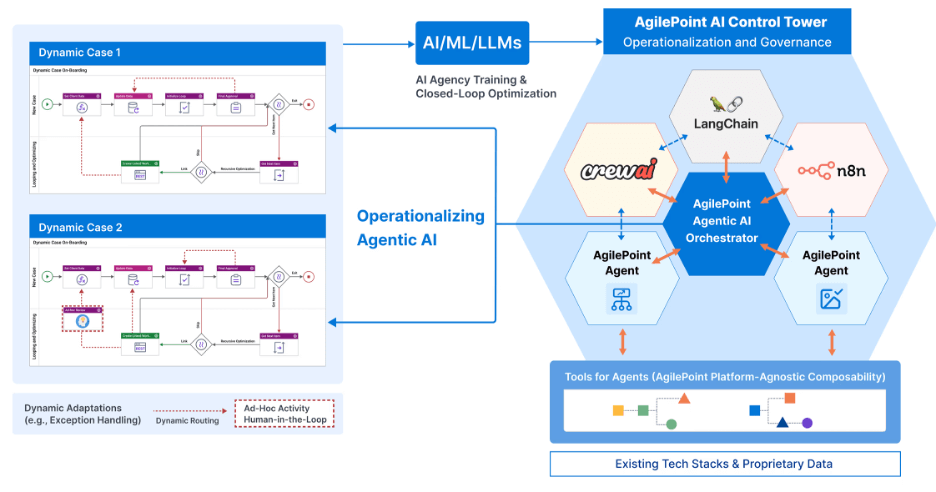
The AgilePoint Vision
AgilePoint’s long-term vision is based on the belief that agentic AI will transform how enterprises operate, BUT only if any agent, from anywhere, can be integrated into real-time business processes and managed with trust, flexibility, and resilience. Over the next three to five years, AgilePoint foresees a significant shift: from fragmented automation and siloed digital transformation to closed-loop, AI-driven business orchestration across departments, systems, and ecosystems.
Jesse Shiah’s foresight began over two decades ago, when he observed that mission-critical systems needed to adapt in real-time without requiring code changes. That same philosophy now underpins AgilePoint’s modern agentic architecture. With its comprehensive abstraction, platform-neutral orchestration, and agent governance layer, AgilePoint provides a foundation built not only for today’s generative agents but also for the upcoming wave of adaptive, goal-driven, reasoning-capable agents.
To help clients envision the road ahead, AgilePoint has created an AI Maturity Model that provides a structured framework to guide organizations through the evolving stages of intelligent automation, from simple task automation to fully autonomous, agentic enterprise systems. The model is divided into four progressive phases:
- Assisted Intelligence – AI augments human tasks within workflows.
- Augmented Intelligence – Agents begin participating in decisions and logic execution.
- Agentic Intelligence – AI agents operate independently across workflows with contextual awareness.
- Autonomous Intelligence – A fully dynamic orchestration fabric where agents plan, reason, and optimize business outcomes at scale.
With AgilePoint, organizations can start small by safely integrating AI into human-in-the-loop processes and confidently scale toward autonomous decision-making using the same metadata-driven foundation. The AI Maturity Model not only reflects market evolution but also acts as a built-in roadmap for value realization, offering a step-by-step path to resilient, governed, and interoperable AI adoption.
This foundational maturity model helps create a clear vision for the future; AI agents will increasingly control the business logic layer, making decisions and optimizing operations across different systems. However, this shift requires more than just smart models; it requires semantic understanding, interoperability, and reliable execution environments. AgilePoint’s unified, metadata-driven model currently integrates over 120 enterprise platforms and provides a pathway for future AI agents to act, adapt, and collaborate across the enterprise without requiring code rewriting or user retraining.
With this in mind, instead of adding another automation layer, AgilePoint is creating what Shiah calls a “resilient automation fabric”: a modular, interoperable, agent-ready platform that can connect CRM, ERP, HR, and custom systems to carry out high-value, cross-functional workflows. These are the 20% of business processes that generate 80% of results. In AgilePoint’s view, AI ROI will come not from isolated use cases but from implementing agentic orchestration across these end-to-end workflows. theCUBE Research fully agrees.
We also value their approach, which encourages diversity in how agents are sourced. AgilePoint expects most enterprises to keep using a mix of proprietary, open-market, and SaaS-native agents. Its agent-agnostic framework guarantees that companies don’t need to rebuild or migrate workflows to benefit from innovations; they can integrate any agent from any source while keeping AgilePoint’s governance and orchestration framework intact.
Ultimately, AgilePoint sees itself as the orchestration engine for the agentic enterprise: the layer where people, systems, and AI agents come together dynamically; where AI not only analyzes but also takes action; and where innovation can be implemented without creating risk. As Shiah noted,
“If you want to show ROI from AI, build agentic orchestration into the workflows that drive your business KPIs.”
AgilePoint is developing the platform to enable that, not only today but also for the next generation of enterprise workflows. And they are off to a great start with a platform purpose-built for cross-functional, agentic, and resilient business process automation.
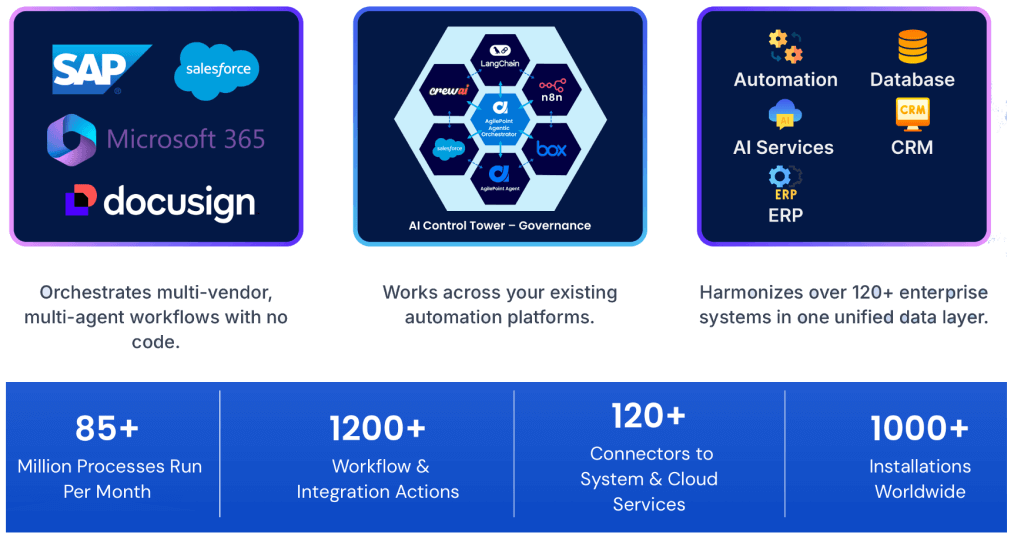
Watch the AgilePoint Session
Jesse Shiah is the co‑founder and CEO of AgilePoint, a pioneering digital process automation and agentic AI orchestration platform. With experience in real-time systems dating back to 2003, Shiah has led the development of AgilePoint’s flexible, metadata-driven architecture—designed for no-code flexibility, managing workflows across various systems, and supporting semantically rich agentic intelligence. As an insightful public voice on AI’s evolution, he’s shared thought leadership on operationalizing AI, governing hybrid workflows, and eliminating hallucinations in enterprise systems. Based in Mountain View, CA, Shiah frequently presents at conferences like Gartner AIBS and the AI Agent Builder Summit, advocating for real-time, trusted, and agile AI deployment in complex enterprises.
Our Conclusion
AgilePoint’s positioning in theCUBE Research agentic interoperability framework ranks it among the leaders in semantic layer support, extensible adapters, agent orchestration, and openness. Their foundational strengths give them an edge:
- Complexity handled via semantic abstraction.
- Operational risk is mitigated with governance.
- Strategic flexibility is enabled by agent freedom.
And, significanly, these capabilities have are the result of the culmination of AgilePoint’s long-term investment in enterprise automation, and well tested within enterprise settings.
AgilePoint’s long-standing commitment to abstraction, governance, and interoperability positions it as a clear innovator in the enterprise Agentic AI landscape. Their promise of value is rooted in a bold yet practical vision: enable any AI agent—from any source—to drive real-time business outcomes through resilient, governed, and semantically aware workflows.
For enterprise leaders seeking to operationalize AI without re-architecting their tech stack—or compromising on control—AgilePoint offers a future-ready foundation. Its architecture enables organizations to turn large language model outputs into action, to adapt workflows in real time, and to safely integrate agents from any vendor or platform. AgilePoint is powering the transition from fragmented automation to unified, agentic orchestration.
Scott Hebner, principal analyst for AI at theCUBE Research, summarized:
“When you look at this… AgilePoint fares extremely well. They’re one of the leaders in that space. On my bullish list is AgilePoint.”
To learn more about AgilePoint and how your organization can benefit from their platform:
- Watch the AI Agent Builder Pre-Summit Session
- Visit the AgilePoint AI Agent Builder Summit Portal
- Visit AgilePoint’s Official Site and request a demo
theCUBE Research considers AgilePoint a leader in agentic business process transformation. For CIOs, CTOs, and CIAO leaders looking to accelerate time-to-value, enhance code quality, and future-proof their development practices, AgilePoint provides a proven and visionary path forward. They aren’t just preparing for the AI future; they’re enabling enterprises to activate it today.

NOTE: This brief is part of theCUBE Research coverage of the AI Agent Builder Summit.
